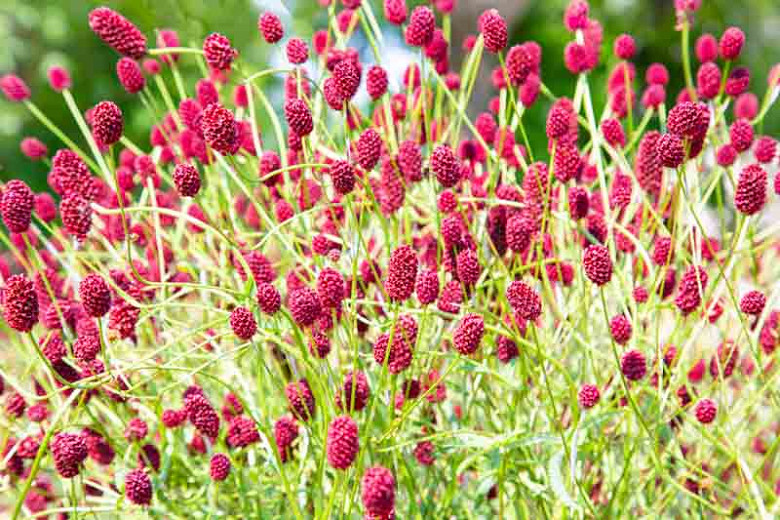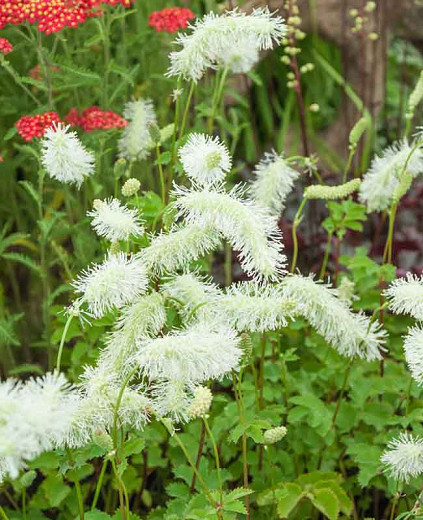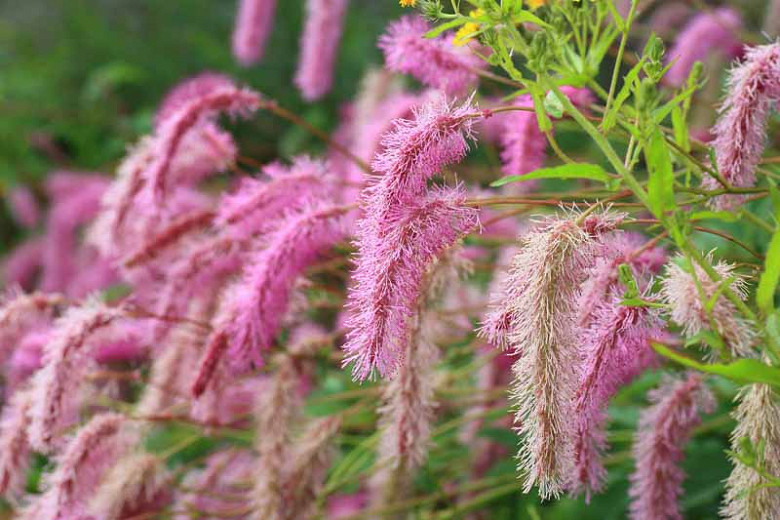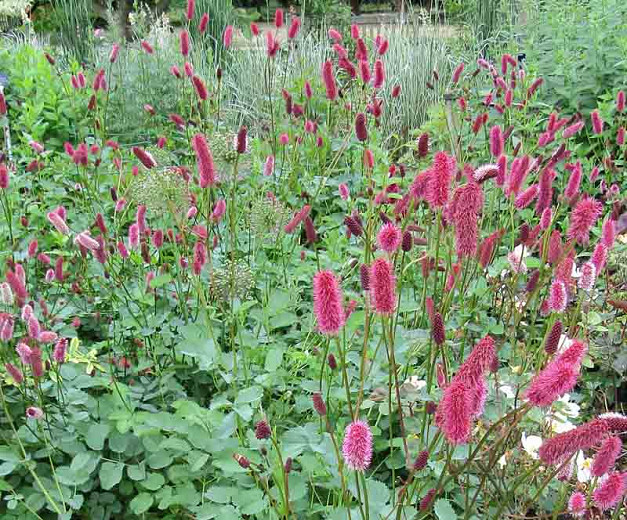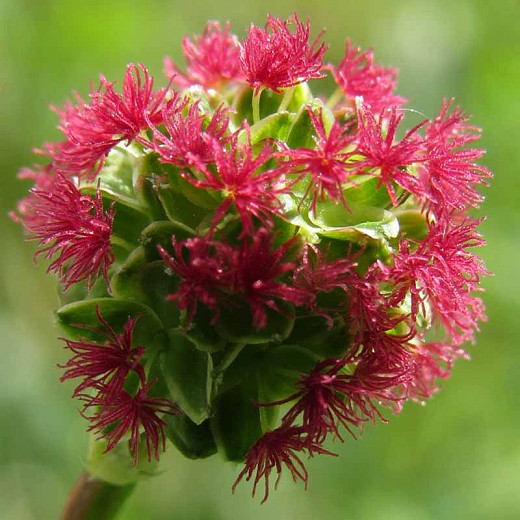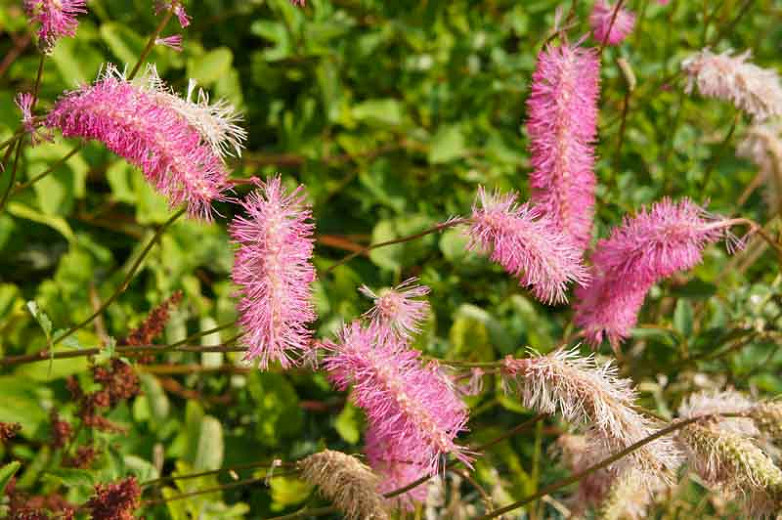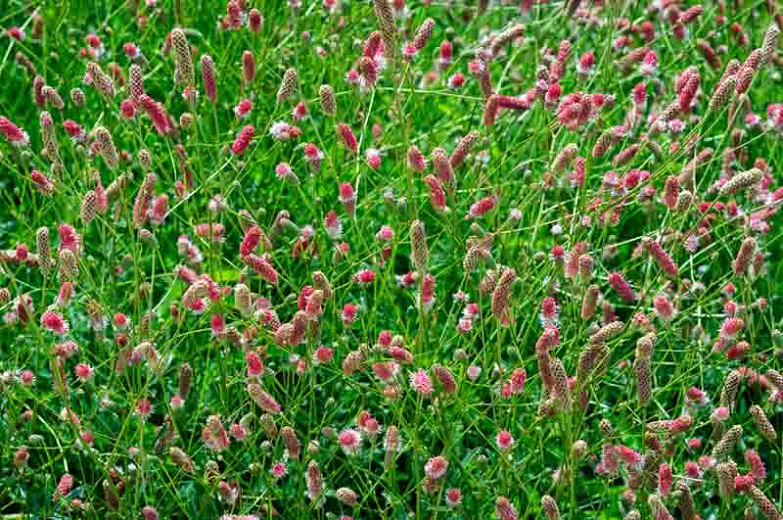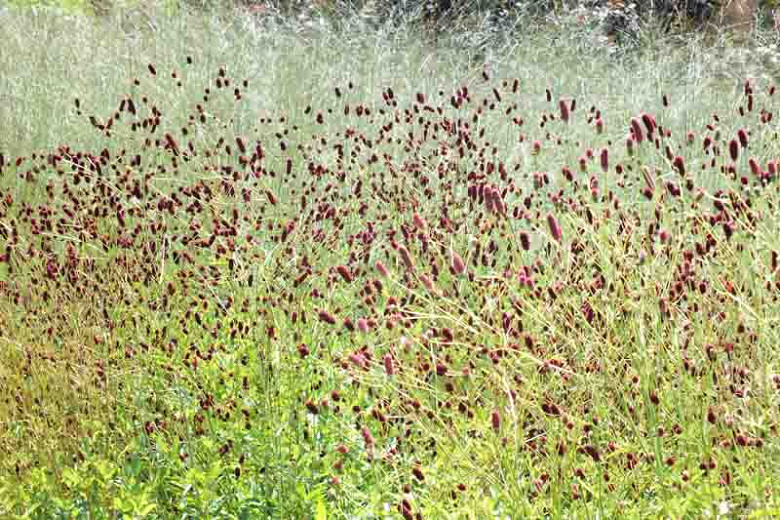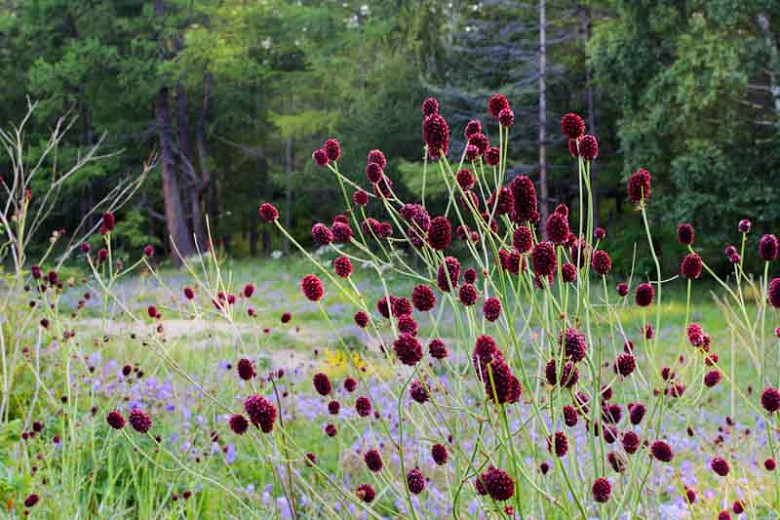Sanguisorba officinalis (Great Burnet)
Sanguisorba officinalis (Great Burnet) is a clump-forming, rhizomatous perennial with pinnate, medium green, basal leaves, each with 7-25 serrate leaflets. Deep red bottlebrush flowers appear atop long stems from midsummer through fall.
Sanguisorba officinalis (Great Burnet) is a clump-forming, rhizomatous perennial with pinnate, medium green, basal leaves, each with 7-25 serrate leaflets. Deep red bottlebrush flowers appear atop long stems from midsummer through fall. They weave through other perennials, adding color and life to the late summer garden. Great Burnet is an ornamental plant that fits well in meadow gardens and naturalistic plantings, as well as herb gardens, where its young leaves may be harvested for soups, salads and sandwiches. Site it carefully as it is an overenthusiastic reseeder.
- Grows up to 30-36 in. high (75-90 cm) and 24-36 in. across (60-90 cm). May require staking.
- Performs best in full sun in moderately fertile, moist, well-drained soils that do not dry out. Give it afternoon shade in hot summer climates.
- Makes a lovely accent in beds and borders, prairie plantings or wildlife gardens.
- Virtually pest and disease free. Deer resistant.
- Freely self-seeds. Prompt removal of spent flowers will prevent unwanted self-seeding.
- Propagate by seed in pots in a cold frame in spring or autumn. Propagate by division in spring or autumn.
- Native to Asia, Europe, and North America.
Requirements
| Hardiness | 4 – 8 |
|---|---|
| Heat Zones | 3 – 8 |
| Plant Type | Perennials |
| Plant Family | Sanguisorba – Burnets |
| Exposure | Full Sun |
| Season of Interest | Summer (Mid,Late)Fall |
| Height | 2' – 3' (60cm – 90cm) |
| Spread | 2' – 3' (60cm – 90cm) |
| Spacing | 24″ – 36″ (60cm – 90cm) |
| Water Needs | Average |
| Maintenance | Low |
| Soil Type | Chalk, Clay, Loam, Sand |
| Soil pH | Acid, Alkaline, Neutral |
| Soil Drainage | Moist but Well-Drained |
| Characteristics | Showy |
| Native Plants | United Kingdom, United States, Alaska, California, Midwest, Michigan, Minnesota, Nebraska, Northeast, Maine, Pennsylvania, Pacific Northwest, Oregon, Washington |
| Tolerance | Deer |
| Garden Uses | Beds and Borders |
| Garden Styles | Informal and Cottage, Prairie and Meadow |
